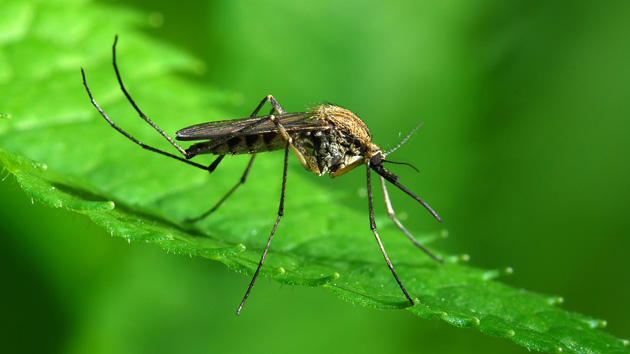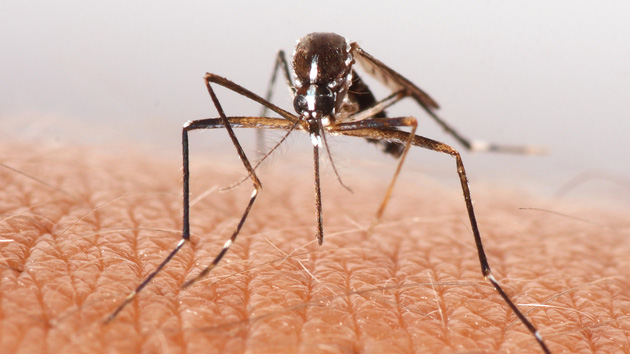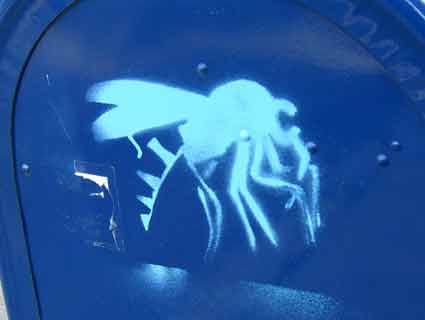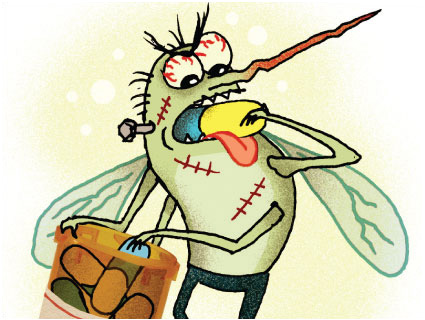
<a href="http://www.shutterstock.com/pic.mhtml?id=90471127&src=id">SW_Stock</a>/Shutterstock
This story first appeared on the Atlantic website and is republished here as part of the Climate Desk collaboration.
The day that everything changed was a broiling Thursday in July—95 degrees, the kind of dry heat that Sacramento Valley residents are used to. If you have to work outside, you do it before noon, swathed in long sleeves and pants to keep the sun at bay and the mosquitoes from eating you alive.
On this day, however, my grandmother, an active and spritely woman even at 80, never made it outside to the garden. She mentioned at breakfast that she wasn’t feeling well, and my grandfather suggested that she take a nap in the sunroom. When he finally woke her up at 4 p.m., she still felt ill and feverish. The nearest emergency room is more than an hour’s drive from their 20-acre farm in rural northern California, but they decided to make the trip. The doctors performed a CAT scan, gave my grandmother some Tylenol, and sent her home.
When my grandparents finally got back at around 11 p.m., my grandfather tried to convince my grandmother to eat something; she said that she could manage a piece of toast. A few days later he found the toast, one bite taken out of it, abandoned in the microwave.
While getting ready for bed, my grandmother went into the bathroom and stood in the dark for 10 minutes. “I asked her what she was doing, and she said she was washing her teeth,” my grandfather recalls. He coaxed her out, and they climbed into bed.
It was around 4 a.m. when the tumult began. “I’m falling out of bed!” my grandmother screamed. Half asleep, my grandfather tried to push her back in, but when he touched her, she shrieked and began sobbing. He rushed down the hallway, phoned the hospital, and was told to call 911. By the time that he could get back to the bedroom, my grandmother was slumped on the floor, her head against the bedside table, babbling incoherently. The paramedics arrived within 15 minutes.
“I wasn’t thinking of it being anything,” my grandfather says now. “I thought it was something she would get treated for and get better.”
My grandmother—or Oma, as we call her, the German word for grandmother—had always been a picture of perfect health, a trait that she and Opa, my grandfather, attributed to decades spent farming organic produce and tending to their land. But as Oma spent the next 32 days in the hospital and then three weeks in a rehabilitation facility, my family came to realize that the first night of terror was just the beginning. Despite the best efforts of her doctors, Oma did not get better.
On August 23, 1999, an infectious disease doctor in northern Queens reported two patients with encephalitis—swelling of the brain—to the New York City Department of Health, according to a Centers for Disease Control and prevention (CDC) report from October 1999. Upon investigation, the health department identified six patients with identical diagnoses who lived in the same vicinity.
In what appeared to be an unrelated development, crows were being found dead all over New York state that summer. It was as if they were dropping from the sky. In early September, a cormorant, two captive-bred Chilean flamingoes, and an Asian pheasant died at the Bronx Zoo. The unexplained deaths filled the papers with foreboding stories. It was thought that mosquitoes were spreading some kind of virus, but which one, and whether it could spread to humans, was unknown.
The local mosquito vector control agency jumped into action and began spraying pesticides. About 300,000 cans of DEET-based mosquito repellent and 750,000 pamphlets with information about personal protection against mosquito bites were distributed to NYC residents, according to the same CDC report.
On September 20, samples from the deceased birds at the Bronx Zoo were tested and sent to the CDC. DNA sequencing revealed a viral strain, closely related to West Nile virus found in other parts of the world, but never before found in the Western Hemisphere. Around the same time, the CDC, while performing tests on a human brain specimen from an encephalitis case, discovered a strain of West Nile virus identical to the one found in the bird. Over the course of the next few months, the same match between the viruses in the birds and those in humans was found dozens of times. A previously undetected strain of West Nile virus, it seemed, was now in the United States.
Like all viruses, West Nile requires a host to survive and reproduce—in this case, birds. Like most arboviruses (diseases transmitted by blood-feeding insects), it is transmitted by mosquitoes. West Nile is also a neurotropic virus, which means that, in some cases, it can infect the brain.
“When West Nile first showed up, it was big news,” says Stephen Ostroff, formerly the associate director for epidemiologic science at the National Center for Infectious Diseases, which is part of the CDC. Hundreds of newspaper articles were published about the emerging disease, often with frightening headlines like “As Fears Rise About Virus, the Answers Are Elusive.“
The answers were elusive in part because of controversy, which is still ongoing, about how best to stop the spread of the virus. Multiple local governments were forced by their health departments to spray pesticides from helicopters and trucks to reduce the adult mosquito population, according to a Journal of Urban Health article from 2002 and the media struggled to compare the risks of pesticide spraying with the risks of the virus.
Just as feared, the problem quickly began to spread to other states. Ostroff was appointed point person for the investigation by the Department of Health and Human Services.
“As we watched it march across the country, in different years there would be different hotspots,” he says. “One year Louisiana, one year Chicago. It would reproduce all of the issues, concerns, and questions about control measures.”
In 2002, West Nile made it to California. By 2004, it had been found in every state in the contiguous United States, according to the American Society for Microbiology’s report on West Nile virus.
In a new climate change report, the National Climate Assessment, which was prepared by a large scientific panel with the oversight of the federal government, the authors write that climate is “one of the factors that influence the distribution of diseases borne by vectors, such as fleas, ticks, and mosquitoes, which spread pathogens that cause illness.”
They go on to write that outbreaks of this diseases are sensitive to local weather and human modifications to the landscape. There are a lot of different variables that influence outbreaks, but they conclude with this: “Enhanced vector surveillance and human disease tracking are needed to address these concerns.”
But after the march of West Nile across the country, our monetary investment in the disease petered out, due in part to the amorphous nature of the disease itself. Unlike the flu, which will arrive every year without fail, the severity of a West Nile outbreak varies hugely.
The authors write that “summers are longer and hotter, and extended periods of unusual heat last longer than any living American has ever experienced. Winters are generally shorter and warmer. Rain comes in heavier downpours.”
Although it will vary by region, these characteristics fomented by climate change, don’t bode well for West Nile outbreaks. And although it may be possible to disregard the slow changes happening within our climate, it’s less easy to ignore the effects of a disease ravaging a family.
Oma’s doctors were baffled. Viral meningitis, bacterial meningitis, encephalitis, a stroke—during her first two weeks in the hospital in the summer of 2013, the doctors ran tests for them all and came up empty.
One of the early tests included a screen for West Nile, but the result came back negative—a frequent occurrence that makes diagnosing the disease still more difficult. Many of her doctors had never even seen a clinical case of West Nile.
To obtain a solid West Nile diagnosis, doctors must run a laboratory test that searches for a virus-specific antibody created in response to the infection. The creation of antibodies can take several days, so often the test has to be run multiple times. When deciding to keep repeating the test, doctors must rely on a patient’s history: how often she goes outside, where she lives, and if there is an outbreak in her area.
My grandfather was becoming more and more convinced that Oma had contracted West Nile. Although he had initially failed to make the connection, he had found a dead bird on their farm about a week before she had been rushed to the hospital, and a dead squirrel a day later.
It would take about three weeks for the doctors to confirm my grandfather’s suspicions. My grandmother had West Nile. No one knows exactly when she contracted the disease, but it was certainly a mosquito that gave it to her—and a bird that carried it. Most birds can carry the virus, but some are more efficient carriers than others.
Crows, for example, can sometimes be “super-amplifiers,” which means that the virus usually replicates in high numbers in their bodies before killing them, allowing them to infect hundreds of mosquitoes. Once a mosquito ingests the blood of an infected bird, the virus invades its body, and begins to make copies of itself. Within a few days, the virus has replicated enough to be transmittable to other creatures. It moves to the mosquito’s salivary glands, and when she (all blood-feeding mosquitoes are female) bites her next meal, she injects a little of her saliva into her victim. The virus has entered a new host.
After being bitten, a person enters into an incubation period that can last from two to 15 days, after which symptoms might start to appear. But not every infected person gets sick.
“Even if you get infected, the chances of you getting symptoms are only one in five,” says Richard Kuhn, professor and head of the Biological Sciences Department at Purdue University.
Most of the people who do become sick experience what researchers call West Nile fever, with symptoms that include fever, headache, fatigue, muscle pain, and rash—symptoms that mirror dozens of other common diseases. But some, fewer than one percent, develop the deadly neuroinvasive form of the disease, a variant that infects the brain. Of those who do, about 10 percent die—usually the elderly and the very young, according to the CDC’s website about West Nile
With many diseases, a diagnosis is the first step to a cure—but not with West Nile. There is no cure for this disease. In the dozen years since the virus first appeared in the United States, no vaccine or treatment has been created. Supportive care, such as providing fluids and keeping the patient comfortable, is medicine’s only recourse.
“When West Nile showed up in the US, there was a lot of interest and resources that were applied that indicated that we would have a vaccine for this in a couple of years or specific therapies in the not too distant future,” Ostroff says. But before the government commits resources to curing a disease, it studies the cost-effectiveness of such action.
In 2006, the CDC released a report stating “universal vaccination against West Nile disease would be unlikely to result in societal monetary savings unless disease incidence increased substantially over what has been seen in the past six years.”
One of the main reasons that a vaccine for West Nile would not be cost-effective is that most people recover without treatment, From 2006 through 2012, there were 17,382 recorded cases—7,785 presenting as neuroinvasive—and 763 deaths. But the CDC acknowledges that the actual number of cases is substantially underestimated, although it’s hard to confirm by how much.
Different models indicate that the number of actual cases could be anywhere from 780,000 to three million, according to the CDC. In a weekly morbidity and mortality report, the CDC cites one study done by researchers in Arizona that states that for every reported case of West Nile neuroinvasive disease, there are 30 to 70 non-neuroinvasive disease cases, many of which are never detected.
West Nile incidence also varies by year. In 2001, for example, 66 cases were reported. But in 2002, that figure rose to 4,156—almost 63 times more. In 2011, there were only 712 cases, few enough to return the disease to the back burner. Then, 2012 saw nearly eight times as many cases as 2011—5,674. The CDC reports that 2012 was the deadliest year yet for the disease.
No one is sure why the disease fluctuates so wildly, but its variance has contributed to a reluctance to undertake the expensive process of developing a vaccine. Kuhn and his team have been awarded multiple grants from the federal government to map the structure of the virus, and he believes that a vaccine could be created.
“It’s not a science question, it’s more of a practical question,” he says, noting that vaccines for viruses similar to West Nile, such as yellow fever, are already available. “But the question is, would anybody be vaccinated?” In Kuhn’s view, drug companies have simply calculated that it is not economically viable for them to test and bring to market a preventive medicine or vaccine for West Nile.
The shortage of government monetary support is another roadblock.
“That might be the biggest threat,” Kuhn says. “Today it’s gotten very difficult to get federal funding. West Nile is not in the news, and it’s reached a somewhat steady state. It’s one of those diseases you have to fight to get funding for.”
And the competition is fierce: Every major illness has a lobbying group that competes for scarce federal dollars. The annual funding provided by the federal government to the CDC and the Epidemiology and Laboratory Capacity program, which distributes funds to states and some large cities for mosquito vector surveillance, has decreased from $35 million in the early 2000s to less than $10 million in 2012.
To persuade the government to put pressure on pharmaceutical companies to create a vaccine or treatment, Ostroff says, “I think it’s going to take more really bad years. Or you need a celebrity spokesperson, a poster child for West Nile, who will really draw attention to the fact that we need to do something about this.”
Two weeks after my grandmother’s admission to the hospital, I came to stay with Opa. I moved into the guest bedroom, the same room I had when I visited as a child. In the mornings before we’d leave for the hospital, we’d make coffee and breakfast. Sitting at the worn picnic table in the kitchen, Opa’s back to the big bay window, we’d scoop out our cantaloupe halves while Opa scrutinized the care plan and analyzed my grandmother’s progress—or lack thereof. He talked intensely, running through the chronology of events as though by going through it again, he might get a different result.
We’d leave for the hospital around 10 a.m. and be in Oma’s room before noon. There we’d sit, on the window bench, the chairs, the floor, talking in turns to Oma—who seemed unable to understand what was happening—to the doctors, to the nurses, to each other. The questions we always came back to were unanswerable: Why Oma? Why now?
It’s impossible to predict how severe West Nile outbreaks will be from year to year in different places. But researchers and public health officials do know that where and when outbreaks occur has much to do with warmer weather. Warm temperatures in the early spring speed up the development of mosquitoes from egg to larva to adult, according to authors of the American Society for Microbiology’s report on West Nile virus.
Early heat increases the rate at which the virus replicates and how quickly it reaches the mosquito’s salivary glands. Mosquitoes also digest blood faster in hotter weather, which means that they need to feed more, which in turn means that they spread the virus faster.
In the past century, the US has warmed by 1.3 degrees Fahrenheit—2012 was the country’s warmest year on record. Temperatures have not increased equally across the board, but in every state, warming is increasing at a faster rate than it was just 40 years ago. William Reisen, head of the center for vectorborne diseases at UC Davis, says that the warming trend is changing the way that West Nile and other vector-borne diseases spread.
“Because of the unpredictability of West Nile virus, there has to be a confluence or intersection of different factors that make it primed for mosquitoes to grow and expand their populations, which then increases the human threat,” says Eden Wells, associate director of the preventive medicine residency at the School of Public Health at Michigan University. In 2012, the perfect storm of variables hit Dallas County, Texas.
That year, following five years of decreased West Nile activity, Dallas County experienced a trend toward warmer weather that coincided with the largest outbreak of the disease in United States history, as cited by the CDC. It had been an unusually mild winter—there were no freezes, which often kill overwintering mosquitoes that carry West Nile through to the next season. Most winter and spring days were above normal temperatures. There were also heavy rains in Dallas County that winter, leaving standing pools of water in which mosquitoes breed. In a report published in the July 2013 issue of the Journal of the American Medical Association that analyzed the Dallas outbreak, researcher Wendy Chung and her colleagues reported that there had been more infected mosquitoes earlier in the season, a more rapid rate of increase in their numbers, and overall greater numbers.
In a September 2013 article published in the journal Viruses, Reisen points to outbreaks in Saskatchewan, Canada, in 2003 and 2007, when summer temperatures averaged almost 10 degrees centigrade warmer than usual. Consequently, the window for the virus to spread from bird to mosquito to human doubled from the usual three months to six. The results were ominous: In the warm years of 2003 and 2007, there were 937 and 1,285 cases of West Nile, respectively. Excluding those two years, the total number of cases from 2002 to 2012 in Saskatchewan was just 105.
“Hi, sweetie,” my grandmother greeted me one afternoon as I came over to sit by her hospital bed. Her arms were marked with bruised and bloody zones where IVs had been placed, but her salt-and-pepper hair was neatly tied back in a French braid.
“Hi, Oma,” I replied, smiling.
“This feels like a nightmare,” she said, shaking her head. It was a familiar refrain: She repeatedly said that this was a nightmare, that it felt unreal.
We’d been desperately hoping that Oma had the less serious variant of West Nile, but once we had the diagnosis, the doctors gave us even worse news: She had the neuroinvasive disease. Now we knew that the virus was in her brain, causing the delusions and confusion we couldn’t explain. Sometimes she would seem fine, recognizing her family and recalling stories from her college days, but often none of us knew where her mind really was, especially when she would ask questions like “Is it normal for people in this new world to walk through walls?”
The doctors could not tell us what Oma’s mental condition would be when the brain swelling decreased, or how long that might take. The best thing that we could do, they said, would be to talk to her about her old life and our current doings. So that’s what we did.
We talked about silly things: the cute male nurse with the 100-watt smile, or how I was putting Opa’s bounty of zucchini into everything that I cooked for him. She laughed when I said that my zucchini waffles had been a colossal failure.
We talked about serious things too: my favorite childhood memories of us together, or how I am certain that the next guy I date will have handwriting that slants to the right—because she taught me that indicates a kind and giving soul.
Sometimes Oma would light up and carry on the conversation, but often I would get no more than a smile before she bit her lip again and returned to staring at the ceiling tiles.
Researchers know that in order for a person to develop West Nile neuroinvasive disease, the virus must cross the barrier between the bloodstream and the brain to infect the central nervous system. But why it makes the jump in some people and not in others is not understood.
“West Nile tends to cause more disease in the elderly and some young people. That has to do with their compromised immune systems,” Kuhn says. “On a very simple level, it might also have to do with the level of virus in their blood or have some genetic component.”
Most patients with non-neuroinvasive West Nile recover completely, although fatigue, malaise, and weakness can linger for weeks or months. But patients who manage to recover from the acute neuroinvasive infection are often left with neurologic deficits that never go away.
On day 32 of Oma’s hospitalization, when we finally got the OK to move her to a rehabilitation hospital, we were jubilant. We packed the little pink tubs full of unused medical supplies, the picture albums, and the DVD copy of Gone with the Wind into plastic bags and shuttled over to the new hospital. It wasn’t home, but we were moving, and that had to be good.
At the rehab hospital, Oma had physical therapy twice a day to improve her mobility—more than a month in bed had left her muscles atrophied and weak. She ate breakfast at around seven or eight in the morning with my aunt, who visited every day. She slowly convinced my grandmother to eat, and the hospital removed Oma’s feeding tube. Lunch was taken outside, something that seemed to cheer Oma. She appeared to us to be getting stronger, and her moments of clarity seemed more frequent. My grandfather stayed until around 7 p.m., kissed her goodnight, and promised to come back the next day.
Because West Nile emerges differently each year depending on many different factors, it isn’t easy for public health officials to plan for outbreaks. Given the lack of a vaccine, “mosquito control is the only effective method of protecting the human population from infection,” says Dave Brown, manager of the Sacramento-Yolo Mosquito and Vector Control District.
This process, called integrated pest management, is funded and implemented by local and state agencies. In Brown’s area, it includes sending his team out to test mosquito pools for West Nile virus, limiting populations using biological control measures such as mosquito fish, and launching a massive public awareness campaign about the disease.
“We really don’t want to depend on human cases” to prompt abatement measures, Brown says, pointing out that once human cases have been identified, an outbreak has already begun. By that time, the only way to deal with the problem is to spray pesticides to kill the mosquitoes.
But Brown says that combating mosquito eruptions is like weather reporting: there are many variables are involved, not to mention irregular funding. The funding models across the country vary greatly, but in his district, as in most of California, the money comes from property taxes. When the economy collapsed, Brown says, so did his agency’s income. If future revenues are inadequate, “we won’t be able to maintain high levels of response,” he says.
Lyle Petersen, director of the division of vector-borne infectious diseases for the CDC, says that surveillance systems for detecting emerging West Nile virus outbreaks vary in quality throughout the country. They are certainly much better than they were several years ago, but “capacities are eroding due to budget cuts at local, state, and federal levels.”
On Monday, September 16, 2013, at around 5 a.m., my grandfather received a phone call from a rehabilitation facility staffer who told him that my grandmother had fallen out of bed and could not be revived. Oma was taken by ambulance to the nearest emergency room and then transferred to Northbay Hospital in Fairfield, California. My aunt called me a little before 8 a.m.
“Hey, how are you?” I asked brightly.
“Well, um … not so good, actually,” she replied. I froze. “Oma had a stroke this morning,” she said, her voice cracking. “You need to come now.”
Oma lay motionless on the hospital bed, her eyes closed, the intermittent hiss of the ventilator filling the room. Over the next few hours, my family trickled into the intensive care unit. Every time a relative arrived and took it all in, the tears began anew. Over the course of the day, four doctors told us that Oma was brain-dead. Opinions differed on whether it was related to her West Nile infection (two said unequivocally yes, two said absolutely not), but they all agreed that nothing more could be done. At around 6 p.m., my grandfather made the decision to take Oma off life support. Two nurses came in, muted the vitals monitor, and began removing the tubes. They placed a box of tissues on the table and left, sliding the glass door shut.
A version of this piece was previously published in Brink Magazine, a publication of the Berkeley Graduate School of Journalism.















